![]()
Foamstars is the latest live service game hoping to gain huge success off the back of being one of the monthly free PlayStation Plus games. It’s a bold strategy, but is Foamstars more Fall Guys or do we have another Destruction AllStars on our hands?
Foamstars is a squad-based multiplayer shooter. However, unlike other games in the genre, this game is built around a party atmosphere. It’s set in the vibrant city of Bath Vegas, where two teams of four battle it out in a chaotic soapy mess. You see, in this town, the battles are fought with bubble guns that shoot thick bubbly foam that glues itself to the scenery.
The main gameplay mechanic here is using your foam guns to cover your opponents in suds before surfing up to them and kicking them out of the arena. The game’s main mode, Smash the Star, requires players to get seven KOs (or “chills” as they’re inexplicably called here) which makes the rival team’s best player the final target. This Star Player gets boosted significantly to protect them, but as soon as they’re taken down, you win.
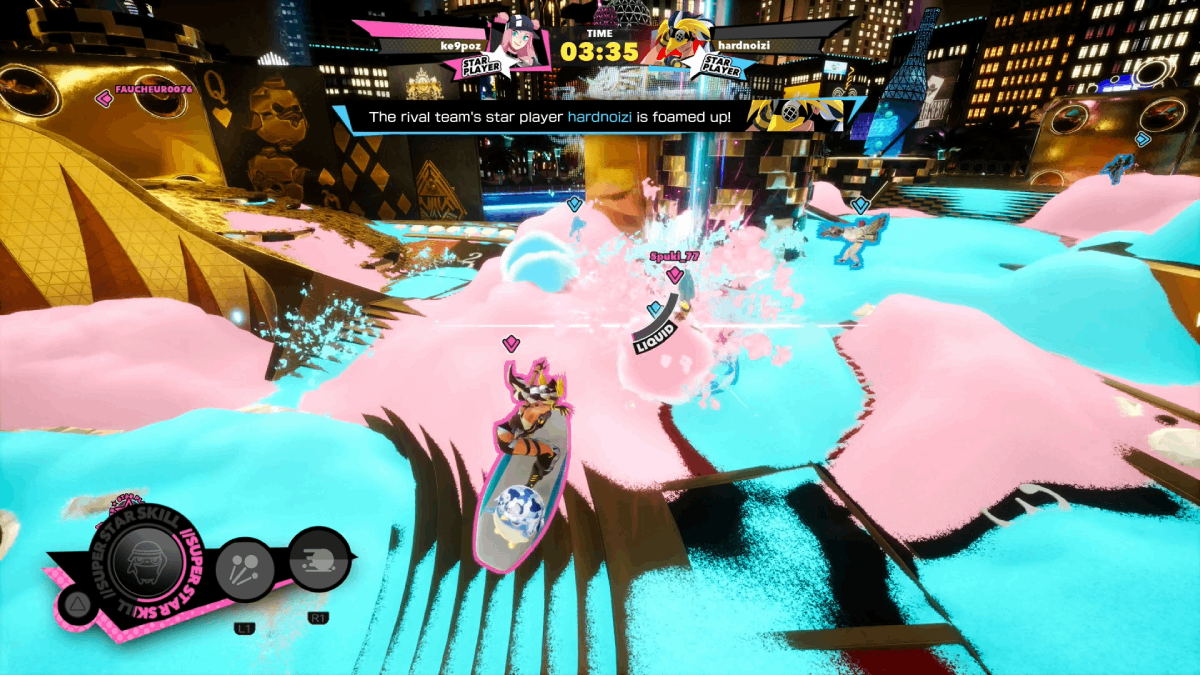
It's a concept that sounds complicated but is utterly compelling once you get into it. Foamstars feels good to play, in a way that’s hard to tell from just looking at it. Admittedly it's even a bit messy when you first start out. Once you get your hands on it though, it’s hard to put down. When I first played it out of curiosity, I found myself still there hours later, lying to myself that the next match would definitely be the last one.
What’s impressive about Foamstars is how differently each of its different cast members plays. Soa is a quick and speedy character, built around an evasive dodge move that allows her to leap out of trouble. Masked germophobe Rave Breaker is a trickster, throwing out traps and sneaking up on his foes. Jet Justice is all about massive damage in a wide space. I quickly found my mains. As someone who enjoys evasive play, hanging back and being slippery, Soa’s dodge move, Penny’s range and Tonix’s push-back style all sat well with me.
The foam is also used in some smart ways. You can surf on your colored foam for quick movement around the stage. It can also be piled up, allowing you to create walls and elevated platforms to give you an advantage in battle. Every shot you take has the potential to shape the terrain to your advantage, which is a brilliant mechanic.
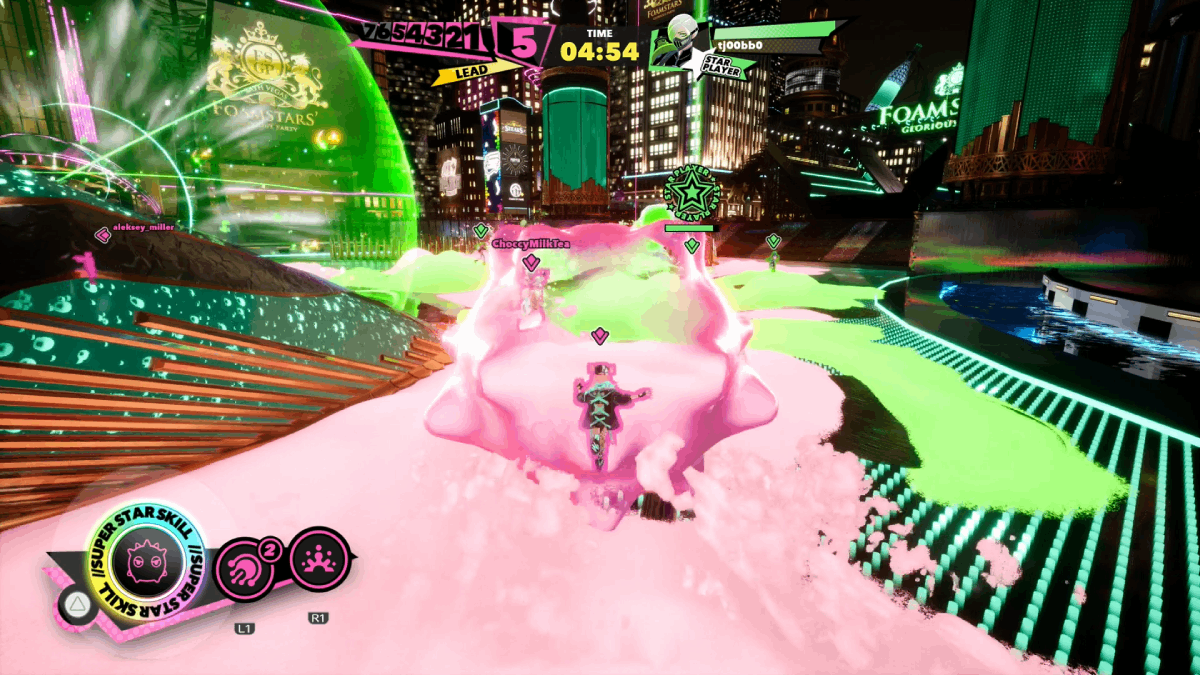
There’s also a minor story mode to play with here, and there’s a lot to like in this too. Each character gets three missions, largely designed to get you grasping each character’s individual move sets. Along the way, you get stories that give you an insight into the characters. We get backstory, banter and side characters, all designed to immerse you in the world.
However, this mode does have problems, and it’s where the cracks in Foamstars begin to appear. With only three missions per character, it’s limited. The writing is also bland at times, and the central story is often absent in favor of unrelated conversations about ice cream. I found this lack of personality distracting and my mind would often wander to a different game.
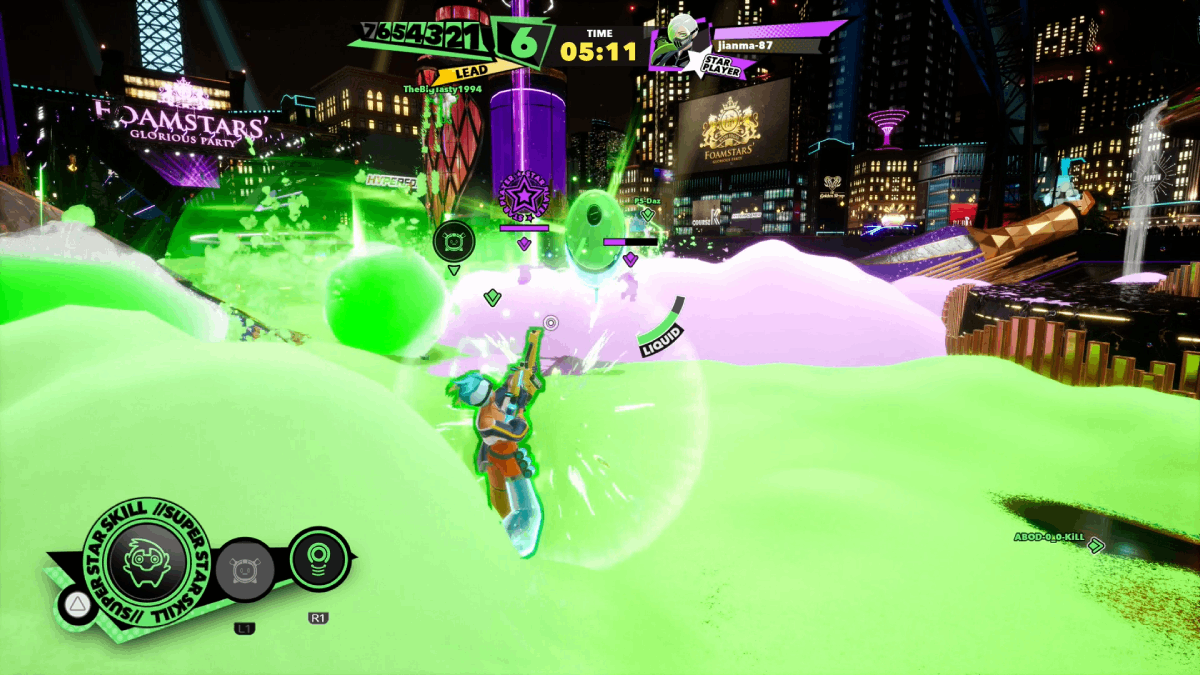
It’s about time I addressed the giant squid in the room. Despite the tutorial’s insistence that Foamstars “isn’t like other games”, the Splatoon comparisons have been inevitable since the game's reveal. It’s a cartoony 4v4 shooter where you cover the ground in the liquid of your team’s color, complete with fashion and timed party events. It’s easy to see the similarities.
To be fair, Foamstars does a decent amount of work to differentiate itself from Nintendo’s franchise. Smash the Star does not remotely play like Turf War. It’s much closer to a traditional deathmatch, with a unique twist of its own. It feels more aggressive than Splatoon, with players intentionally targeting each other instead of the floor. The ability to stack the foam also gives it an extra dimension over its inspiration.
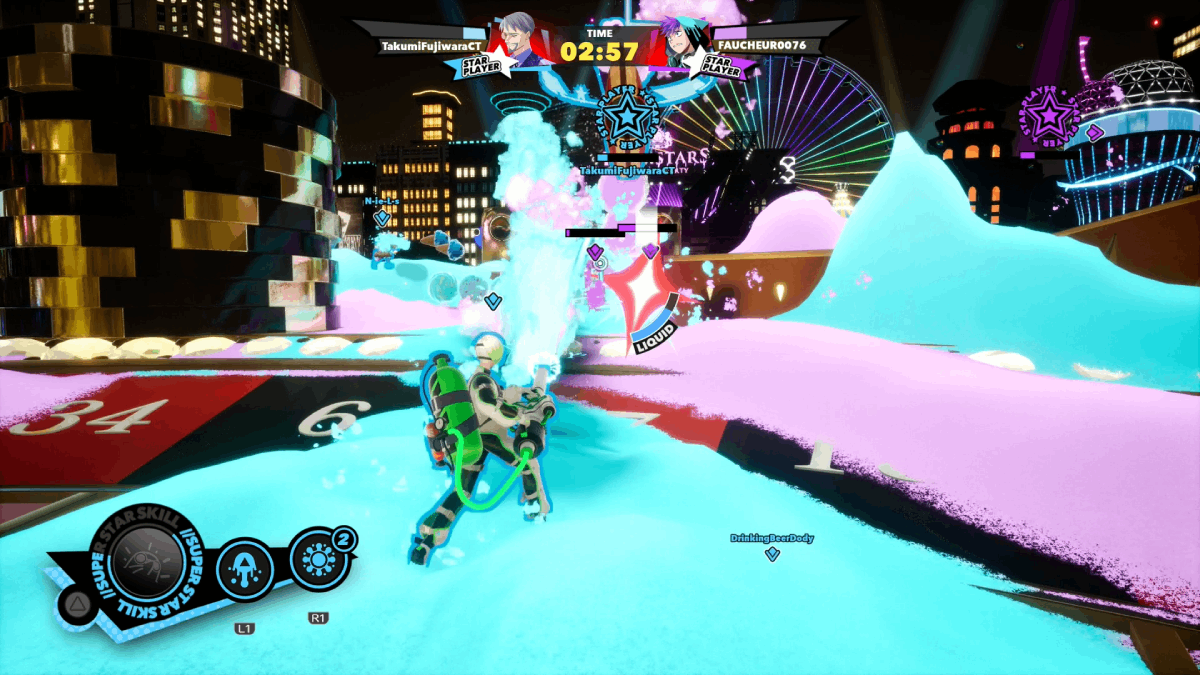
However, Foamstars still often feels like a game desperately following in Splatoon’s footsteps and failing to catch up. Let’s talk aesthetics. Splatoon’s inspirations in Japanese street fashion give the series a feeling of youthful expression, creativity and playfulness. Meanwhile, Foamstars draws inspiration from the glitz and glamor of Las Vegas. However, much like the real Vegas, the gaudy neon and gold trim is mostly masking something hollow and tacky.
Foamstars looks fine. The character designs are nice enough, and there’s a sheen to the main lobby area. However, it all feels designed by corporate committee, like a Square Enix executive saw Fortnite and Overwatch and demanded the same. While I enjoy how most of the cast feel to play, I do not care for most of them as actual characters because their personalities are so flat across the board. Ironically, I care more about my Inkling despite them being a blank slate player avatar, and I can't help but wonder if that would have been a better option here too.
This hollow feeling is exemplified in the game’s noted use of generative AI imagery, as the album covers in the game’s music list all bear the bland, soulless hallmarks of typical Midjourney slop. There’s no consistent art direction, just a series of generic images that inspire nothing. Compare this to Splatoon, where Nintendo not only created unique album artwork but also wrote extensive lore around the fictional bands who made the songs.
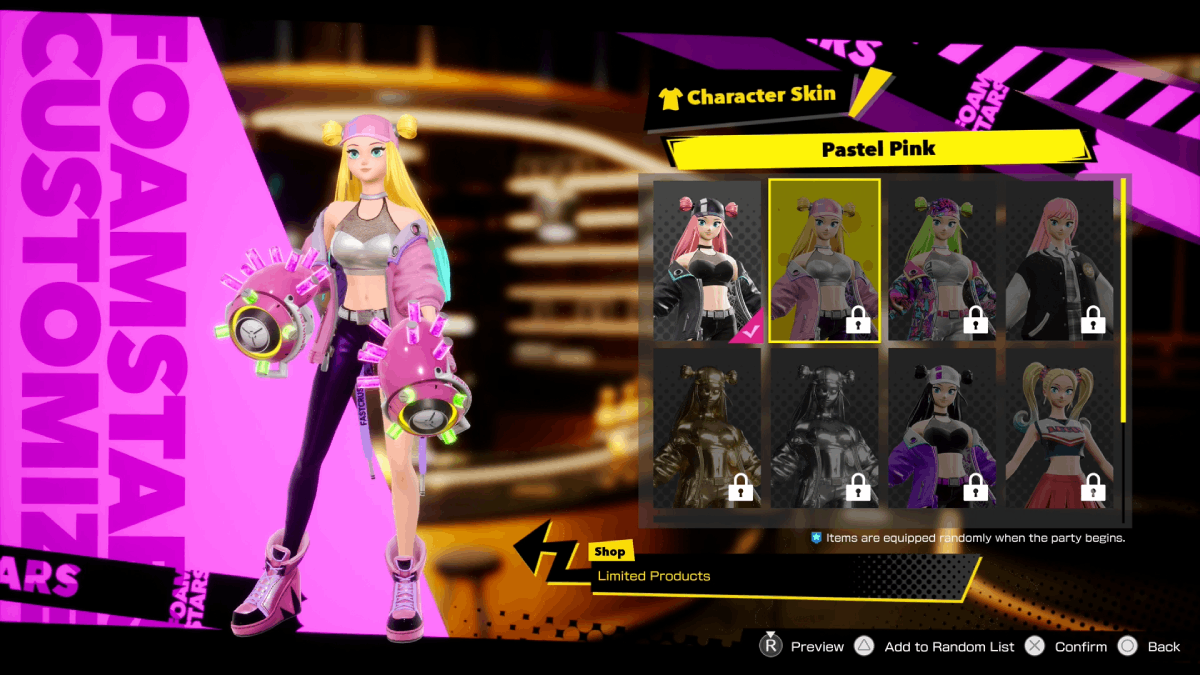
Customisation is also a massive problem. Much like its Las Vegas inspiration, Foamstars is very interested in draining your wallet. Practically every cosmetic option is locked behind microtransactions. Buy a season pass! Buy extra costume packs! Don’t forget these time-limited offers! Unlike Splatoon where a few hours of play unlock a bunch of clothing options, Foamstars locks you out of expressing yourself with a persistent paywall.
